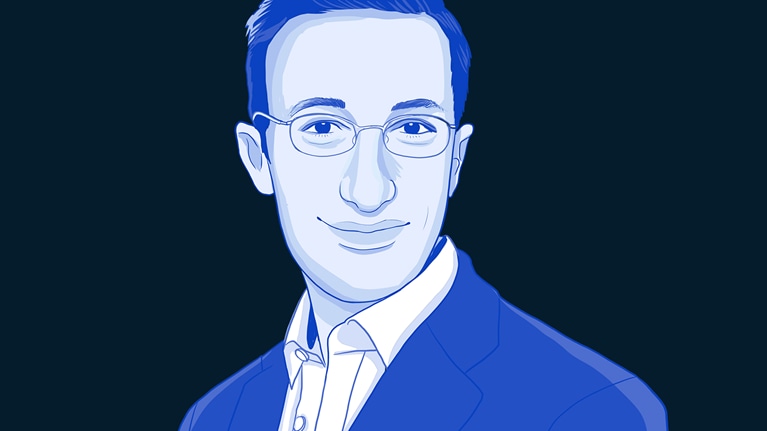Scaling a start-up is never easy, and even less so during a global pandemic. But a willingness to disrupt a vertically integrated industry with an innovative business model, a rigorous program of product testing, and the support of a parent company willing to let you move fast can spell the difference between success and failure. Hartmut Schaper, CEO of Security & Safety Things (S&ST), spoke to McKinsey’s Jerome Königsfeld about S&ST’s journey from concept to scale-up.
Jerome Königsfeld: What was the thinking behind the creation of Security & Safety Things?
Hartmut Schaper: Security & Safety Things is a Bosch-backed venture that offers an open platform for security cameras, providing an operating system, an app store, and a corresponding development environment. It was designed to be a sort of “android operating system” for surveillance cameras, creating a global standard that accelerates innovation.
The platform model allows surveillance-camera manufacturers to power their devices with S&ST’s free and open operating system. This allows camera operators to install and run apps from the S&ST app store. The revenue from these apps is split between the app developer and S&ST.
It’s a multisided business model whose success relies on cooperation between core security-industry stakeholders, including end customers, integrators, camera manufacturers, and software developers. To help foster this cooperation, Bosch, together with partners, initiated the formation of an industry alliance, the Open Security and Safety Alliance (OSSA), a neutral forum where competitors can talk to each other.
Jerome Königsfeld: What does S&ST offer customers?
Hartmut Schaper: We offer innovation and flexibility. Our app store provides access to the latest artificial intelligence (AI) video-analytics applications across industries around the world. Camera operators can upload, update, and delete apps, just like on a mobile phone, with multiple apps running on one camera at the same time. This makes customer investments in new cameras future-proof by allowing them to continuously take advantage of new advancements in AI and computer vision.
Jerome Königsfeld: That’s an innovative solution, but how did you ensure your product serves a need that customers are willing to pay for?
Hartmut Schaper: We confirmed the interest of customers and partners by closely involving all stakeholders from the beginning of the process.
We conducted a series of hackathons with pilot developers to create the first minimum viable product (MVP) solutions. We ran these hackathons early in the development phase, when the platform’s MVP was barely finished and documentation still incomplete. The hackathons were a success and made us realize that only a fraction of the planned documentation was actually required.
We also set up end-to-end pilot projects to help us gain additional insights. For example, we equipped a fashion store with cameras that analyze shopping paths to optimize customer experience, proving the technical feasibility and business value of our solution.
Would you like to learn about Leap, our business-building practice?
Jerome Königsfeld: What were the main criteria for deciding the product was ready to scale?
Hartmut Schaper: The three key criteria were the technology platform, the value to customers, and the commitment by software-development companies and camera manufacturers.
First off, we released the MVP as early as possible to build a customer-centric product. This meant we had to be ready to run continuous, remote software updates without impacting the performance of existing installations. Making sure we’re able to continuously improve our solution in a tight feedback loop with customers is absolutely crucial to success.
Secondly, we collected feedback from all potential customer segments in real time and pressure-tested our concepts with pilot projects. The positive cohort analyses convinced us it was time to scale the business, since we saw that customers in pilot projects were trying more video-analytics apps over time, proving the value of our offering.
Thirdly, we established an ecosystem of software developers that already contributed more than 50 video-analytics applications to our app store. But more important than the number of apps initially available was the fact that our software developers continued to upload new apps to our store, proving the viability of a self-fueling ecosystem.
Finally, leading camera manufacturers showed their commitment to our solution by joining the OSSA to promote an open standard across the industry.
Jerome Königsfeld: S&ST is a Bosch-owned start-up. What does the governance model look like? How are you funded?
Hartmut Schaper: S&ST is a daughter company of Bosch on the group level, with significant funding until we break even, which emphasizes its importance to Bosch’s overall Internet of Things (IoT) strategy. In a venture-capital-like approach, this funding depends on milestones that are jointly defined by S&ST and the Bosch Group.
Reporting to Bosch on the group level also ensures our independence from other business units of Bosch that are also active in the security industry. This is essential for our business model, since S&ST is an industry-wide platform, independent of any specific camera manufacturer. Also, being a separate legal entity provides us with the freedom to be as fast and nimble as a start-up.
Jerome Königsfeld: What advantages does being a Bosch company give you?
Hartmut Schaper: Being part of the Bosch group provides S&ST with unique benefits. Bosch is a strong, trustworthy brand in the technology and security industry. That positioned us strongly to build an industry platform and ecosystem that required trust from core stakeholders in the market.
Bosch also enjoys long-standing relationships with our potential customers, which allowed us to leverage these relationships to verify product-market fit. It also helped facilitate some of the first pilots, while we maintained strict internal walls with our shareholder Bosch when working successfully with some of its competitors. Bosch fully understands and supports this neutrality, since our ecosystem can work only if we support competing companies in a fair and trustworthy way.
Jerome Königsfeld: How did COVID-19 impact your business, and how did you react?
Hartmut Schaper: Fortunately, COVID-19 and the subsequent restrictions did not have a large impact on our day-to-day work. Prior to the COVID-19 outbreak, our teams already worked seamlessly across our three offices in Germany, the Netherlands, and the United States, working in agile sprints while using digital collaboration tools such as GitLab, Jira, or Confluence.
Even the cancellation of a major trade show in the United States, where we planned to launch S&ST, had little effect on the success of our launch and subsequent rollout. We switched to an all-digital launch, generating even more awareness and customer interest internationally than we would have achieved with a traditional launch event.
Also, we quickly realized that the COVID-19 crisis had a strong impact on our customers, especially in retail. During a two-week sprint, we developed a dedicated COVID-19 solution, a time frame the industry had previously considered impossible. The solution includes store-occupancy tracking and face-mask detection, helping our retail clients comply with COVID-19 regulations and protect the safety and health of their customers.
Jerome Königsfeld: What’s your vision for S&ST and its future growth?
Hartmut Schaper: First, we want to innovate the industry and lift it to the next level, enabling software developers to create and market innovative solutions quickly. Second, we want to be the preferred channel for video-analytics applications and facilitate integrations—for example, with smart buildings. Third, we want to help our clients increase the security and safety of their employees and customers while dramatically improving their operational efficiency. Last but not least, we need to grow quickly to keep pace with the growth of the ecosystem we created to ensure its seamless operation.

